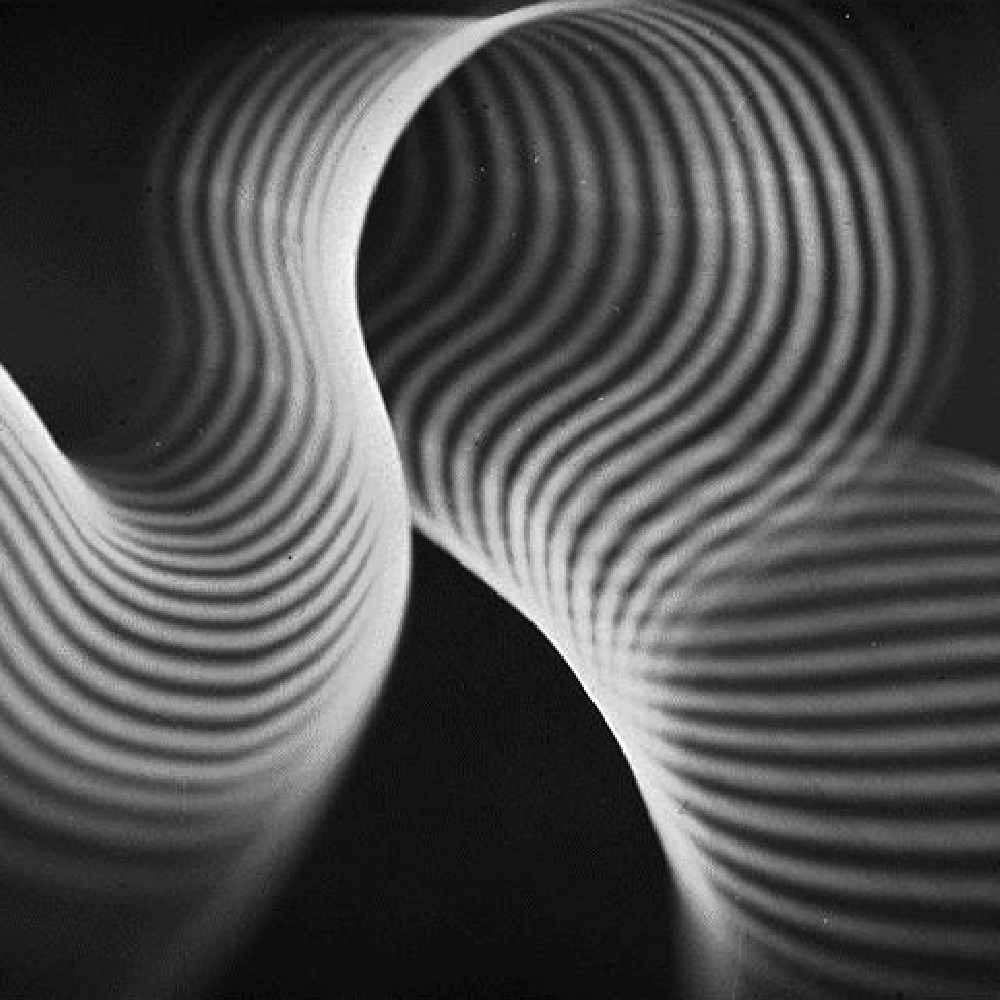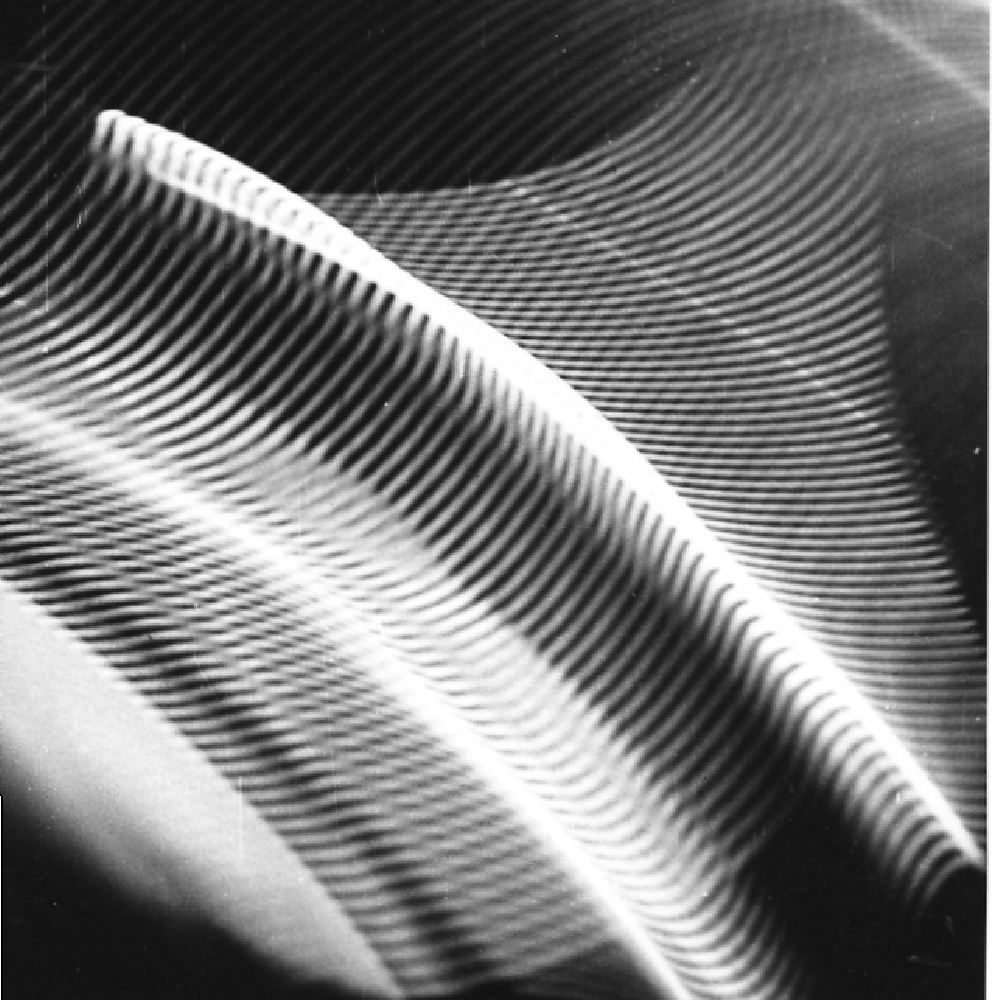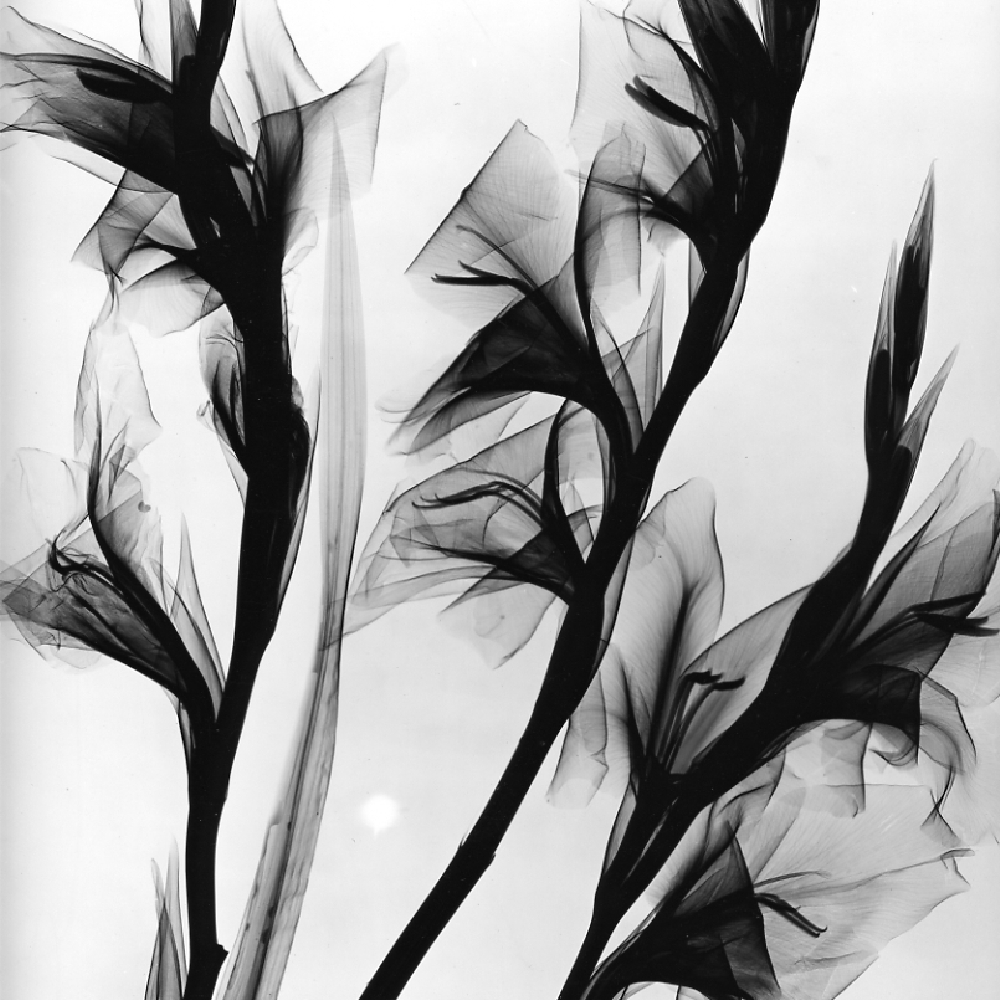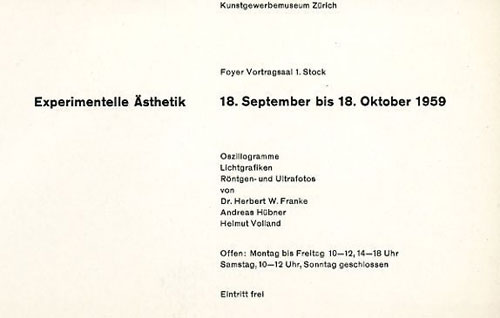















EXPERIMENTAL AETHETICS
From Painting with Light to Man-Machine Art
The original press document on the exhibition from 1959


The works in the exhibition are creations of that branch of abstract photography which began with Moholy-Nagy and Man Ray, relying on the technical manipulation of light. Only through the consistent use of specially developed instruments for controlling light is it possible to achieve the highest degree of geometric perfection that Constructivism discovered for art and that these images captivate with. Formally, the transition from ruler and compass to apparatus represents the shift from compositions of straight lines and circles to arbitrary, precisely harmonized structures.
The images can be categorized into those that depict familiar objects from an unfamiliar perspective and those that make unfamiliar configurations visible with ordinary light. The ultra-close-ups, created using electromagnetic radiation with shorter wavelengths than that of light, as well as the aerograms, which are flow images around moving color particles, can serve as examples that our way of seeing with light is just one among many possibilities, each of which reveals only a part of reality. All of these visual worlds possess their own graphic charm. The shapes of light and waves, as well as the electronic images like oscillograms, are compositions of curves. The way they are arranged is related to the rules that generate harmony in music. The realized principle of order, known as continuity in mathematics, plays a similar role in nature, especially in the microcosm, as symmetry. From an art theoretical perspective, it corresponds to style, a certain constraint voluntarily embraced. Within the general laws of style, which are clearly revealed in the serial nature of the images, there exists an inexhaustible variety of form variations directed.


One of the most interesting aspects of the representations is their nature as a model of an art form – model used in the scientific sense as an object that exhibits certain characteristics of the phenomenon in question and therefore serves as a medium for study and experimentation.
An important prerequisite for quantitative analysis applies to them: they can be characterized in a formal language and defined, similar to how musical notation allows in music.
One of the most interesting aspects of the representations is their nature as a model of an art form – model used in the scientific sense as an object that exhibits certain characteristics of the phenomenon in question and therefore serves as a medium for study and experimentation.


The exhibited works exist at the intersection of geometrically scientifically determined structure and freely designed form, thereby raising questions about the limits of art.
Could they perhaps be the first signs of a non-classical graphic painting that corresponds to music, as they, like music, operate through instruments governed by principles of vibration? An art form that, until now, could not develop as a parallel to music simply because aesthetically oriented optics are technically harder to control than aesthetically oriented acoustics? An art form that is only now coming of age in our visually oriented era, as laboratory practices provide the means of realization? The oscillograms, light, and waveforms do not answer these questions, but they do show that the technology of our time exerts a profound influence on matters of creative expression, whether one wishes to classify it as art or not.
